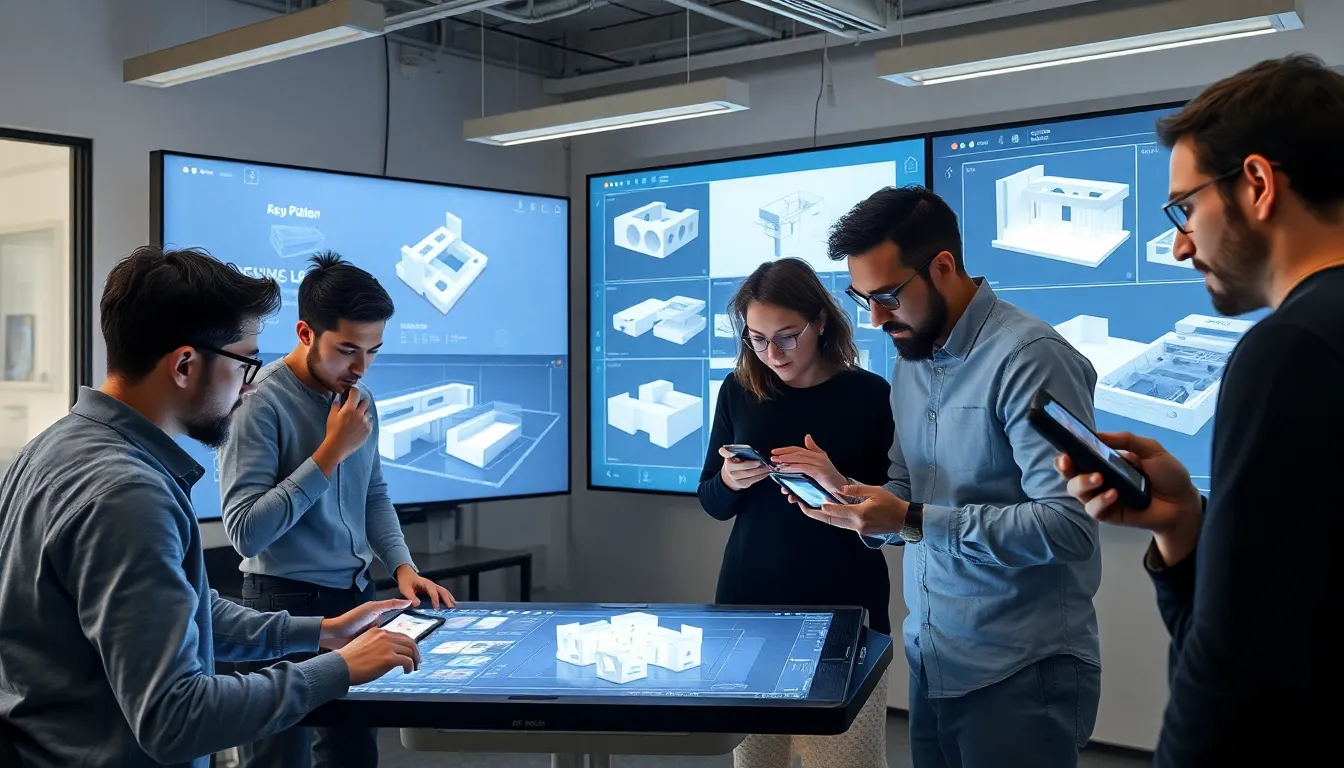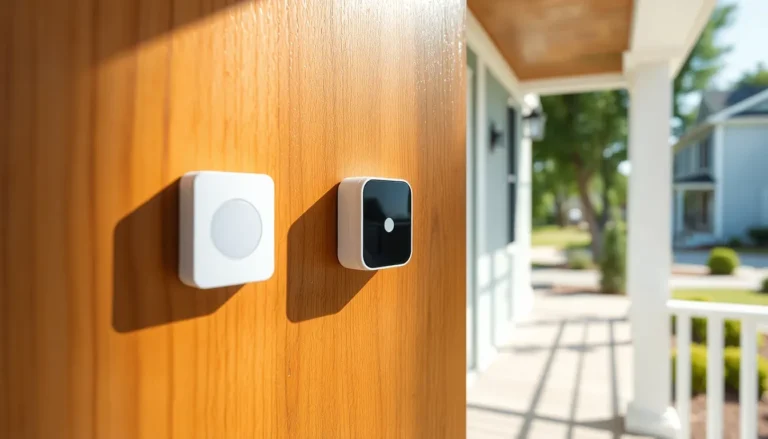Table of Contents
ToggleIn a world where reality often feels a bit too ordinary, Augmented Reality (AR) prototyping tools are the magic wands designers never knew they needed. Imagine transforming a simple sketch into a vibrant 3D model that dances right off the page. With these innovative tools, creativity isn’t just unleashed; it’s catapulted into another dimension—literally!
Overview of AR Prototyping Tools
AR prototyping tools significantly enhance the design experience for creators. These tools allow users to visualize concepts in a more interactive way.
Definition and Purpose
AR prototyping tools specialize in creating interactive 3D models from initial design ideas. They enable designers to overlay digital content onto real-world environments. This process helps ensure that concepts resonate with users as intended. By enabling real-time visualization, these tools streamline the feedback loop, making adjustments quicker and more efficient. Designers rely on these applications to experiment with various layouts, materials, and features without extensive physical prototypes.
Importance in AR Development
In AR development, prototyping tools serve as critical assets. They facilitate a faster design cycle, allowing for rapid iteration and improvement. These tools support collaboration among teams by providing a shared platform for visual feedback. When designers can demonstrate their ideas visually, stakeholder buy-in increases significantly. Furthermore, they contribute to user testing by gathering valuable insights on usability. As a result, AR prototyping tools play an essential role in shaping effective and engaging augmented reality experiences.
Key Features of AR Prototyping Tools

AR prototyping tools come equipped with features that enhance design and collaboration. These tools are designed to optimize user experience, making the prototyping process more efficient.
User Interface Design
A well-crafted user interface is crucial in AR prototyping tools. Intuitive navigation streamlines the design process. Visual assets, such as 3D models and sketches, can easily be manipulated. Various templates facilitate rapid model creation. Designers benefit from drag-and-drop functionality, allowing for seamless integration of elements. Customization options provide flexibility to reflect unique project needs. Transparency features enable real-time adjustments, ensuring designs meet expectations.
Collaboration Capabilities
Collaboration in AR prototyping tools fosters creativity among team members. Multiple users can engage simultaneously, sharing ideas and feedback instantly. Cloud-based platforms support remote teamwork, enabling global participation. Real-time editing features ensure everyone sees updates immediately. Built-in communication tools, such as chat and comments, enhance discussion and decision-making. Version control allows teams to track changes effectively, maintaining a clear project history. These collaborative elements strengthen project outcomes and promote innovative solutions.
Popular AR Prototyping Tools
Numerous AR prototyping tools are available, each offering unique features that enhance the design process. Below are three prominent options that stand out in the market.
Tool 1: Features and Benefits
Unity allows designers to create rich interactive experiences with its extensive asset store. This platform supports a variety of AR devices, making it versatile for different projects. Drag-and-drop functionality enables easy integration of 3D models. Collaboration within teams happens seamlessly through cloud sharing. Real-time editing capabilities keep everyone updated with the latest changes, streamlining the design workflow.
Tool 2: Features and Benefits
Vuforia Commerce excels in providing robust tools for AR commercial applications. Designers appreciate its easy integration with existing content management systems. Vuforia’s image recognition technology showcases digital overlays on physical products, enhancing customer interaction. The analytics dashboard provides insights into user engagement, making adjustments more data-driven. Users benefit from quick deployment across multiple platforms, ensuring wider reach.
Tool 3: Features and Benefits
Adobe Aero simplifies AR content creation with its user-friendly interface. Designers focus on storytelling through immersive AR experiences. The application supports various file formats, ensuring flexibility in design assets. Collaboration features allow for feedback directly within the app, making communication more effective. Export options make sharing projects with stakeholders or clients straightforward, enhancing the prototyping process.
Best Practices for Using AR Prototyping Tools
Employing effective strategies maximizes the potential of AR prototyping tools. Designers should focus on iterative testing throughout the process. Engaging in real-time feedback enhances the quality of prototypes. Collaborating with cross-functional teams fosters diverse perspectives. Utilizing templates and customization options supports creativity and efficiency. Importantly, celebrating small successes during prototyping motivates continual improvement and innovation.
Effective Prototyping Techniques
Successful prototyping hinges on a few key techniques. Creating low-fidelity prototypes first aids in rapid iteration before moving to high-fidelity versions. Integrating user testing sessions within the prototyping timeline provides insights into usability. Streamlining navigation simplifies interactions and enhances user experience. Ensuring that visual elements align with design goals strengthens communication. Lastly, utilizing analytics tools helps track user engagement and refine prototypes accordingly.
Common Pitfalls to Avoid
Avoiding common mistakes enhances the effectiveness of AR prototyping tools. Rushing through the early stages often leads to missed design flaws. Neglecting user feedback can create prototypes that don’t meet user needs. Overcomplicating designs diminishes clarity and usability. Failing to document design iterations may result in a lack of coherence. Lastly, underestimating the importance of collaboration can limit innovative solutions and slow down the development process.
AR prototyping tools are revolutionizing the design landscape by bridging the gap between imagination and reality. By enabling designers to create interactive 3D models and visualize concepts in real-time, these tools foster creativity and streamline the design process. The collaborative features enhance teamwork and allow for instant feedback, making the prototyping cycle more efficient.
As the demand for engaging AR experiences grows, leveraging these tools becomes essential for designers aiming to stay ahead in the competitive market. Embracing AR prototyping tools not only improves design outcomes but also shapes the future of augmented reality, paving the way for innovative solutions that captivate users.







